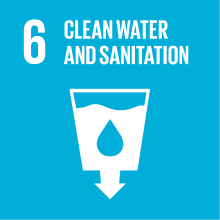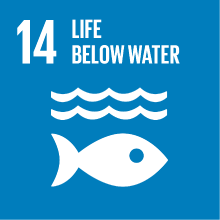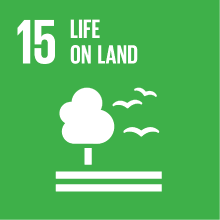PHYSICAL GEOGRAPHY AND GEOMORPHOLOGY-2
- Academic year
- 2025/2026 Syllabus of previous years
- Official course title
- GEOGRAFIA FISICA E GEOMORFOLOGIA-2
- Course code
- CT0624 (AF:608369 AR:292953)
- Teaching language
- Italian
- Modality
- On campus classes
- ECTS credits
- 0 out of 6 of PHYSICAL GEOGRAPHY AND GEOMORPHOLOGY
- Degree level
- Bachelor's Degree Programme
- Academic Discipline
- GEO/04
- Period
- 1st Semester
- Course year
- 2
- Where
- VENEZIA
- Moodle
- Go to Moodle page
Contribution of the course to the overall degree programme goals
It represents the practical and application-based component of the course, designed to consolidate and implement the theoretical knowledge acquired in the module “Physical Geography and Geomorphology – 1.” Specifically, the module aims to develop operational skills in geomorphological analysis through the use of digital tools and landscape interpretation methodologies.
Activities are organized into three intensive sessions of 6 hours each (totaling 18 hours) and involve group work (maximum of 4 participants per group), during which students collaborate to produce a technical report based on the analysis of a real-world geomorphological issue in a coastal environment.
The module contributes to achieving the learning objectives of the degree program by fostering:
• the acquisition of technical skills in using QGIS and Python for the processing and visualization of spatial data;
• the development of teamwork abilities through collaborative environmental projects;
• the ability to produce written outputs in the form of a technical-scientific report, using appropriate disciplinary language;
• a deeper understanding of the relationship between geomorphological processes and coastal dynamics.
The final report produced in this module constitutes an integral part of the course assessment (1/3 of the final grade), contributing to the evaluation of students’ ability to apply knowledge in practical contexts.
Expected learning outcomes
• Knowledge and understanding: describe the fundamentals of technical-scientific writing and understand the basic principles of coastal geomorphological analysis, with particular reference to marine inundation and runup calculation.
• Applying knowledge and understanding: independently use QGIS for cartographic representation and Python in a Google Colaboratory environment to develop coastal runup scenarios, interpreting real data and simulations.
• Making judgements: critically select scientific sources and data, justify methodological choices, and assess the geomorphological and management implications of the developed scenarios.
• Communication skills: write a complete and coherent technical report using scientific language, appropriate bibliographic references, and effective graphical support.
• Learning skills: learn autonomously through video tutorials, support materials, and in-class discussion, improving their ability to work both independently and collaboratively.
The skills acquired in this module complement and strengthen those developed in Module 1, focusing on practical application in a coastal geomorphological context.
Pre-requirements
• Coastal geomorphological processes (erosion, sedimentation, shoreline dynamics);
• Scientific terminology and the basic structure of a technical-scientific report;
• Cartographic tools and data used in geomorphological analysis.
In addition, basic digital skills are required, including:
• Ability to manage compressed files and folders (e.g., extracting .zip archives);
• Familiarity with text editors (such as Word or equivalent software) for drafting the technical report;
• Ability to use Google Colaboratory and Google Drive, accessible via the university institutional account.
Advanced programming skills are not required: the provided Python scripts will be guided and fully commented. However, a positive attitude toward working with digital data and GIS tools is strongly recommended.
Contents
• wave and storm surge data (different for each group);
• topographic datasets (DEM, profiles, orthophotos);
• a Python script to be used in Google Colaboratory for computing coastal runup.
An introductory lecture in class will explain what runup is, why it matters for coastal geomorphology and infrastructure planning, and how it is computed using the provided script. Technical and bibliographic guidelines will also be provided to support report development.
The final output consists of a technical report (maximum 4 pages, excluding references) including the following sections:
• Introduction: review of existing studies related to the selected area, taken from peer-reviewed articles or technical reports;
• Study Area Description: geographic and geomorphologic context, supported by a map produced with QGIS (1 figure, including possible subfigures);
• Methods and Data: description of the datasets used, the assumptions for calculation, and the structure of the Python script for runup estimation;
• Results: analysis of wave conditions (Hs and Ts), presentation of runup results (R2), supported by graphs or explanatory maps;
• Discussion and Conclusions: critical reflection on methodological limitations, data uncertainty, and possible implications for coastal management.
Students must also include and justify a future runup scenario (e.g., sea-level rise or increased storm intensity) as an environmental projection exercise.
The entire activity is carried out over three in-class sessions of 6 hours each, with support from the instructor and resources provided via the Moodle platform. The report will be assessed according to structured criteria covering scientific content, formal accuracy, methodological completeness, consistency of results, and quality of references and citations.
Note: Submission of the report is mandatory to be admitted to the theoretical exam (Module 1) and constitutes an integral part of the overall course evaluation.
Referral texts
• datasets on wave climate and storm surge;
• topographic and geospatial data of the study area;
• a Python script already set up for coastal runup calculation.
The following support materials will also be made available on Moodle:
• a guide on how to write a technical-scientific report (structure, style, length, sources);
• video tutorials on using QGIS and Python in Google Colaboratory;
• a specific video guide on using the runup calculation script;
• a video guide on searching and selecting bibliographic sources, and on the acceptable sources for a technical report (peer-reviewed articles, official technical reports, qualified grey literature).
Assessment methods
Purpose of the assessment: to evaluate the students’ ability to apply the knowledge acquired in the theoretical module to the analysis of a real-world coastal geomorphological case study, using digital tools (QGIS, Python) and producing a coherent, structured, and well-argued technical report.
Rules and deadlines:
• The report must be produced by groups of up to 4 participants.
• Each group submits a single report and receives a single grade, taking collective responsibility for the work.
• Submission must occur by the end of the 18-hour practical module (i.e., the third day).
• During class sessions, ongoing formative feedback from the instructor will be available to help improve the report.
• For each day of delay, 1 point will be deducted from the final group grade.
• Failure to submit the report will result in exclusion of the entire group from the final written exam.
• In case of an unsatisfactory evaluation, the instructor will assign a new deadline for revision and resubmission.
• Students who have already completed the exercise in previous academic years are exempt from submission.
• Submission must be made exclusively via Moodle, following the guidelines and format provided by the instructor during class.
The report will be assessed based on content, structure, methodological rigor, and critical thinking, as specified in the evaluation rubric presented in class and available on Moodle. The final score will account for 1/3 of the overall course grade, combined with the written exam of the theoretical module.
Type of exam
Grading scale
CONTENT (maximum 15 points):
1. Introduction: includes proper references to peer-reviewed articles and/or technical reports, relevant and complete literature review, coherent and clear framing of the topic (0–5 points).
2. Study area and methods: clear presentation of the study area, completeness of the map created with QGIS, thorough description of data and runup calculation method (0–5 points).
3. Results and discussion: coherence between data, methods, and results; ability to critically discuss limitations and provide reasoned suggestions for coastal management (0–5 points).
FORMAT (maximum 15 points):
1. Text structure: syntactic and grammatical accuracy, logical paragraph organization, consistency of in-text citations (0–5 points).
2. Image quality: proper source attribution, visual clarity, completeness of graphic elements (0–5 points).
3. Bibliography: completeness and correctness of the reference list, consistency between in-text citations and final references (0–5 points).
Reports will be considered insufficient if they present one or more of the following issues:
• Errors in runup calculation or wave data extraction;
• Plagiarism or copying of texts, images, or data without proper attribution;
• Missing citations for data, images, or referenced content.
Grade scale:
• 18–22: sufficient report, meeting the minimum requirements in both content and format, though with some inaccuracies or omissions.
• 23–26: good report, with solid structure, appropriate sources, and coherent presentation of results.
• 27–30: very good or excellent report, well-argued, detailed, and with effective critical reflections.
Honours (cum laude) may be awarded to reports achieving the maximum score (30/30) and standing out for argumentative excellence, presentation accuracy, and originality of discussion. Honours will be included in the final average as 33 points.
The score from this module contributes 1/3 to the final grade for the course “Physical Geography and Geomorphology,” together with the multiple-choice written exam from Module 1 (2/3 of the total grade).
Teaching methods
Lectures: the instructor introduces the fundamental principles of technical-scientific writing and coastal runup calculation, providing the geomorphological and applied context of the exercise.
Independent learning: students have access to video tutorials on:
• using QGIS for environmental mapping;
• using Python in Google Colaboratory to compute coastal runup;
• guidelines for writing the technical report;
• searching and selecting acceptable bibliographic sources.
In-class practical activities: groups work on real data and specific coastal scenarios, applying the tools learned to produce a complete technical report.
Collaboration and feedback: classroom activities promote teamwork and interaction with the instructor, who provides ongoing feedback to support the project development.
All teaching materials and digital resources are available on the university’s Moodle platform.
Further information
2030 Agenda for Sustainable Development Goals
This subject deals with topics related to the macro-area "Natural capital and environmental quality" and contributes to the achievement of one or more goals of U. N. Agenda for Sustainable Development



